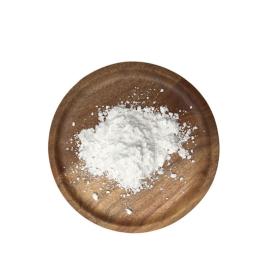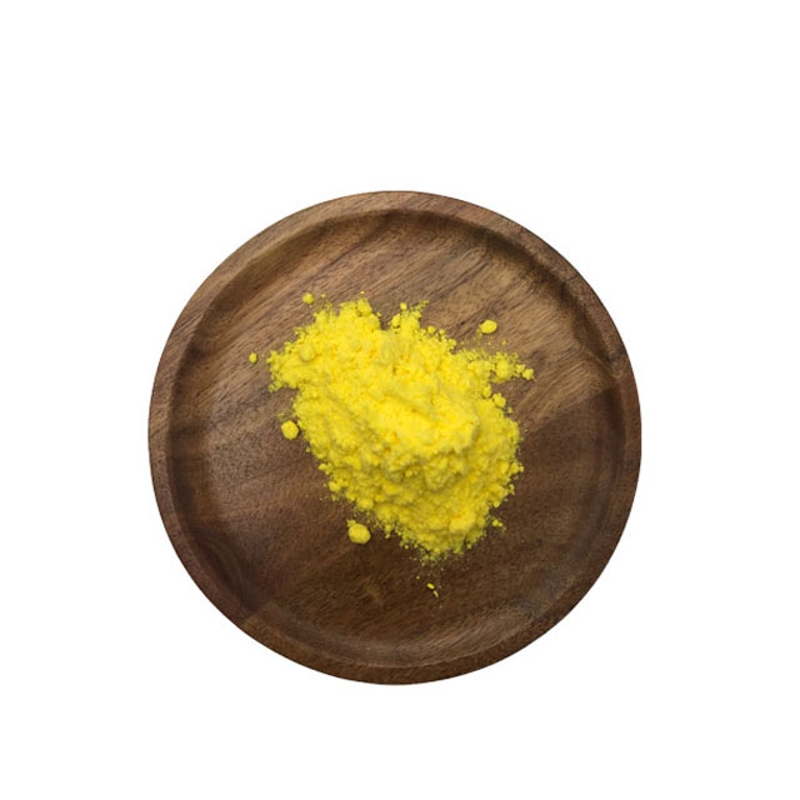-
Categories
-
Pharmaceutical Intermediates
-
Active Pharmaceutical Ingredients
-
Food Additives
- Industrial Coatings
- Agrochemicals
- Dyes and Pigments
- Surfactant
- Flavors and Fragrances
- Chemical Reagents
- Catalyst and Auxiliary
- Natural Products
- Inorganic Chemistry
-
Organic Chemistry
-
Biochemical Engineering
- Analytical Chemistry
- Cosmetic Ingredient
-
Pharmaceutical Intermediates
Promotion
ECHEMI Mall
Wholesale
Weekly Price
Exhibition
News
-
Trade Service
Pancreatic cancer, as one of the most mortal malignancies, is a veritable "king of cancer".
of pure surgical techniques has not brought about a significant improvement in patient prognostication, and the role of comprehensive treatment has been paid more and more attention.
chemotherapy is still the basic treatment for patients with advanced pancreatic cancer.
In the second-line treatment, the effectiveness and safety of the liposome iliticocone-5-fluorouracine (FU)/folate (LV) second-line treatment program was confirmed in the NAPOLI-1 study, and based on the Asian population data in the study, the new China Society of Clinical Oncology (CSCO) guidelines also list this program as a second-line treatment of pancreatic cancer level I.
years, real-world research on second-line treatment of advanced pancreatic cancer has been carried out in various countries, providing a series of real-world data for clinical practice.
4 February is World Cancer Day.
World Cancer Day was launched in 2000 by the International Alliance against Cancer (UICC) to promote new ways to promote cooperation among organizations and accelerate progress in the areas of cancer research, prevention and treatment for the benefit of humanity.
2021, the theme of World Cancer Day remains "Caring for Patients and Fighting Cancer Together (I am and I Will)."
this newspaper's "Pancreatic China" column invited Professor Bai Chunmei of the Department of Oncology at Beijing Concord Hospital to make a concrete interpretation of the real-world study of second-line treatment of advanced pancreatic cancer and share it with readers.
Professor Bai Chunmei, Director physician and doctoral tutor of the Department of Oncology of Beijing Concord Hospital, is now the CSCO Director of CSCO Neuroendocrine Oncology Professional Committee member CSCO Head and Neck Cancer Professional Committee Member of the Chinese Medical Association Neuroendocrine Tumor Branch Of the Chinese Research Hospital Society Pancreatic Diseases Professional Committee Standing Committee of the main research direction for tumor diagnosis and treatment, especially molecular markers in tumor diagnosis and treatment And the application in the prognostics to preside over and participate in the anti-tumor new drug clinical drug trial scientific platoon, the best systemic chemotherapy program and treatment sequence of the discussion recently, Kieler and other real-world research, through retrospective analysis of different combinations of first- and second-line systemic chemotherapy programs for patients with advanced pancreatic cancer clinical results, to explore the survival of the best benefit of systematic chemotherapy programs.
the study included 301 patients with advanced pancreatic cancer and divided them into queue A and queue B.
queue A (n=132) is a patient who was undergoing first-line chemotherapy from 2011 to 2013 and who was able to undergo second- or third-line chemotherapy in a diseased state, and Queue B (n=169) is a patient who received the above treatment from 2014 to 2017.
study analysis showed that between 2014 and 2017, the use of liposome iliticocone plus 5-FU/LV combined program was the highest in second-line treatment.
study yielded the following results: First, with the progress of clinical treatment, systematic chemotherapy has significantly improved patient survival; Platinum) scenario, the patient's median total survival (OS) is longer, up to 14.27 months;
Figure 1 Patient Survival Curve Lipids Iliticon Joint Program for Patients in Asia, Median OS 9.4 Months A Multi-Center Retrospective Real World Study from Korea 86) It was shown that the liposome ilyticon plus 5-FU/LV combination was applied to the second-line treatment of advanced pancreatic cancer, with median OS for 9.4 months and median progression-free survival (PFS) for 3.5 months (Figure 2), half-year survival rate of 65.1%, tumor progression rate of only 37.5%, objective remission rate (ORR) of 10.5%, disease control rate (DCR) of 55%, 31.4% of patients CA1 The level of 9-9 is less than 50% lower than the baseline, in terms of safety, most of the common adverse reactions and 3/4 level adverse reactions can be managed, the occurrence of severe adverse reactions such as neutral granulocyte reduction disease fever is low, and there are no treatment-related deaths.
Figure 2 Patient Survival Curve This study further confirms in the real-world clinical environment that the lipid iliticosis plus 5-FU/LV combination scheme is effective and safe for second-line treatment in patients with advanced pancreatic cancer.
To other second-line chemotherapy programs, liposome ilitis joint program efficacy and safety advantages are considerable at present in clinical, advanced pancreatic cancer second-line treatment of lipid-delipidated body Iliticon combination program, empirical application of second-line chemotherapy program including FOLFOX solutions, FOLFIRI (5-FU/LV-Irithycon) solutions, FOLFIRINOX solutions, improved FOLFIRINOX (mFOLFIRINOX) solutions, AG solutions, S-1 or Capertabin solutions, etc.
years, a series of real-world studies have explored the efficacy and safety of different second-line chemotherapy programs, which will be interpreted below.
vs. FOLFOX program A retrospective single-center real-world study that included 101 patients with advanced pancreatic cancer who underwent second-line chemotherapy assessed and compared the effectiveness of different chemotherapy regimens.
results showed that the patient's median OS was extended by 1.25 months and the median PFS by 1 month compared to the FOLFOX programme (Figure 3).
addition, for patients with CA19-9 levels above the median, the efficacy of the lipid iliticosis joint program was more advantageous, with the median PFS extended by 1.35 months and the median OS extended by 3.15 months compared to the FOLFOX scheme.
3 Patient Survival Curve vs. Two Treatment Options vs. A single-center retrospective cohort study of the FOLFIRI program included 75 patients with advanced pancreatic cancer who were treated with a lipid-like Ilithycon joint program or a FOLFIRI program.
results showed that the liposome Iliticon joint program was more effective and the median PFS was extended by 1 month compared to the FOLFIRI program (Figure 4), while patients receiving the FOLFIRI program had a higher proportion of patients using atolipid to treat acute diarrhea during treatment, indicating that the lipid irithycon joint program was safer.
4 Patients with two treatment options have no progression survival curve vs. A retrospective, multi-center observational study from South Korea, published at the 2020 Meeting of the American Society of Clinical Oncology (ASCO), included 378 patients with advanced pancreatic cancer who received liposome ilithroid joint program or FOLFIRINOX program as second-line therapy.
results showed that there was no significant difference between the median PFS and median OS survival curves of the liposome Iliticon joint scheme and the FOLFIRINOX scheme, and the total mitigation rate was similar, and the efficacy of the two schemes was comparable.
subgroup analysis showed that for patients aged >70 years, median PFS, median OS, and safety of liposome iliticocone combined programs were significantly superior to FOLFIRINOX programs (Figure 5).
addition, a higher frequency of level 3 neutrophic cell reduction and level 3 peripheral neuropathy was observed in patients with the FOLFIRINOX programme, suggesting that the liposome ilithycon joint programme was safer.
Figure 5 Subgroup Analysis Results of two treatment options vs. mFOLFIRINOX Program A study included 71 patients with advanced pancreatic cancer who continued second-line chemotherapy after first-line chemotherapy in the mFOLFIRINOX programme and assessed the efficacy of second-line chemotherapy in the mFOLFIRINOX program.
results showed that the medium PFS from second-line chemotherapy was 2.5 months and the medium OS was 6.2 months.
previous studies have shown that the lipid ilitic concomitant joint program was used in patients with advanced pancreatic cancer, with median OS for 9.4 months and median PFS for 3.5 months.
, the second-line application of lipid body Iliticon joint scheme, compared with mFOLFIRINOX scheme horizontally, the efficacy is better.
addition, the safety data of the second-line mFOLFIRINOX scheme show that the rate of adverse reactions at level 3/4 is 61%, the rate of acute adverse events is 33.3%, and the rate of adverse events is 16.9%.
compared with the results of NAPOLI-1 study, the adverse events after treatment of all levels of lipid Ilitisan joint program were more than 1/2 level, most of which were to be toned;
vs. A retrospective study of the S-1 or Carpedabin or AG programmes included patients with advanced pancreatic cancer who were treated with the second-line treatment of Capedabin (n-40) or S-1 (n-41), and the results showed that the S-1 group and the kapethabin group had a medium PFS of 2.7 months and 2.0 months, respectively.
retrospective study showed that the mesoOS and the medium PFS in patients with advanced pancreatic cancer were 7.3 months and 2.5 months, respectively.
previous studies have shown that the lipid ilitic joint program is used in patients with advanced pancreatic cancer, with median OS for 9.4 months and median PFS for 3.5 months.
therefore, the second-line application of lipid ilitic joint scheme, compared with S-1 or Capatham or AG scheme horizontal, the effect is better.
above, real-world studies have shown that the survival benefits of the liposome Iliticon second-line joint programme are better than those of other joint programmes .3-9 (table).
table Different joint programs for second-line treatment of advanced pancreatic cancer real-world survival benefit targeted treatment and immunotherapy, bringing new hope for the development of molecular targeted therapy drugs, for the treatment of pancreatic cancer has brought new hope.
has made great progress in target drug therapy in recent years, finding new target points and clarifying the mechanism of action is of great significance to the study of targeted therapy.
treatment of pancreatic cancer is mainly concentrated in PRIME signaling path, DNA damage repair, mutation, metabolism and so on.
see PARP inhibitors: This year's Phase III.POLO clinical study reported at the Gastrointestinal Oncology Symposium (ASCO GI) of the American Society of Clinical Oncology analyzed metastatic pancreatic cancer (MPaC) events (AEs) in patients with metastatic pancreatic cancer (mPaC) with germline BRCA gene mutations (gBRCAm).
the study suggests that in mPC patients with gBRCA mutations, the first-line use of platinum therapy showed no progress, and that the use of olapali to maintain better therapeutic tolerance was better.
immunotherapy for pancreatic cancer has also been explored, such as the use of drugs specifically for the PD-L1 pathline, but did not achieve satisfactory therapeutic results.
msI-H patients can choose anti-PD-1 antibody therapy.
to explore chemotherapy combined immunotherapy, considering that the overall state of pancreatic cancer patients deteriorated very rapidly, future research in the local tumor immune micro-environment, but also need to pay attention to the overall state of patients.
contigation chemotherapy is of great significance in the comprehensive treatment of patients with advanced pancreatic cancer, and the liposome iliticocon-5-FU/LV combination is currently the only approved second-line treatment for advanced pancreatic cancer in the world.
In recent years, the results of real-world studies have further demonstrated that the second-line treatment of advanced pancreatic cancer in the lipid-lipid iliticosis plus 5-FU/LV combination program has clear efficacy and manageable safety, and has shown good survival benefits, especially among Asian patients.
looking to the future, we look forward to more real-world studies to bring more practical evidence for clinical diagnosis and treatment, and to provide stronger guidance for optimizing systematic chemotherapy programs for patients with advanced pancreatic cancer.
References, Kieler, et al. Impact of New Chemotherapy Regimens on the Treatment Landscape and Survival of Locally Advanced and Metastatic Pancreatic Cancer Patients. J Clin Med. 2020; 9(3):648. [2] Yoo,et al. Real-world efficacy and safety of liposomal irinotecan plus fluorouracil/leucovorin in patients with metastatic pancreatic adenocarcinoma: a study by the Korean Cancer Study Group. Ther Adv Med Oncol. 2019 Aug 23; 11:1758835919871126.[3] Kieler,et al. A real-world analysis of second-line treatment options in pancreatic cancer: liposomal-irinotecan plus 5-fluorouracil and folinic acid. Ther Adv Med Oncol. 2019 Jul 17; 11:1758835919853196.[4] Tossey, et al. Comparison







